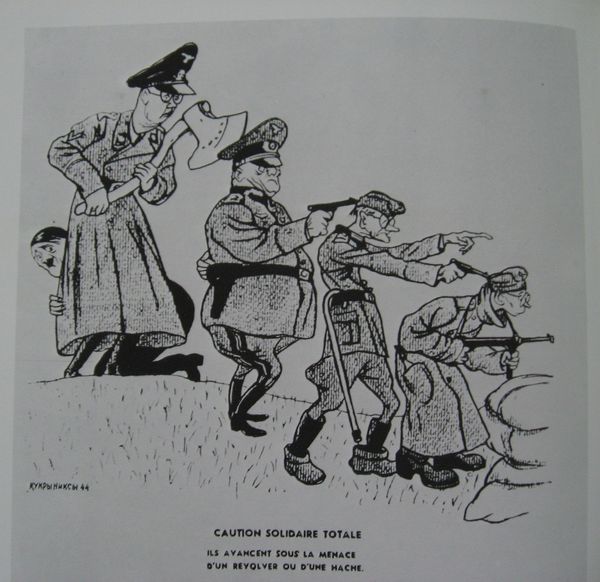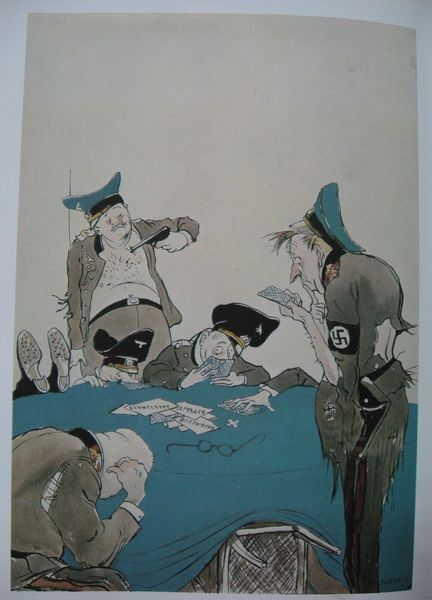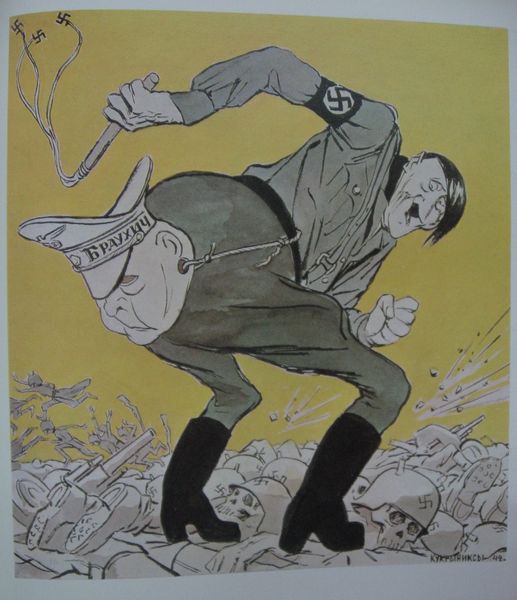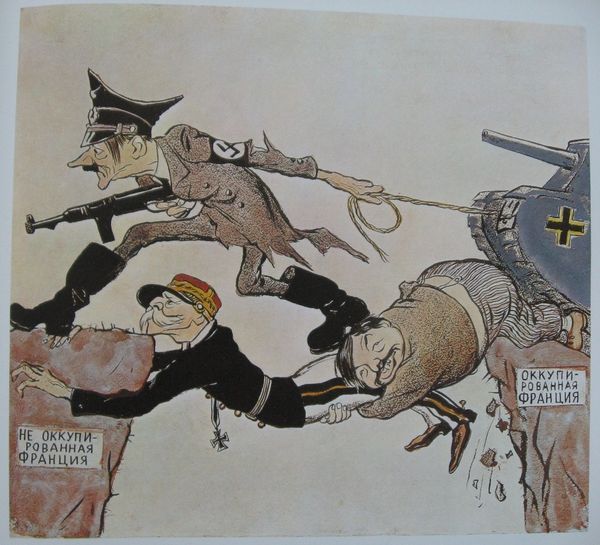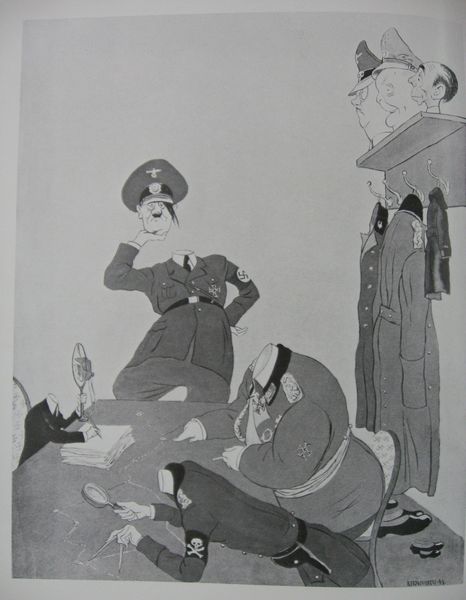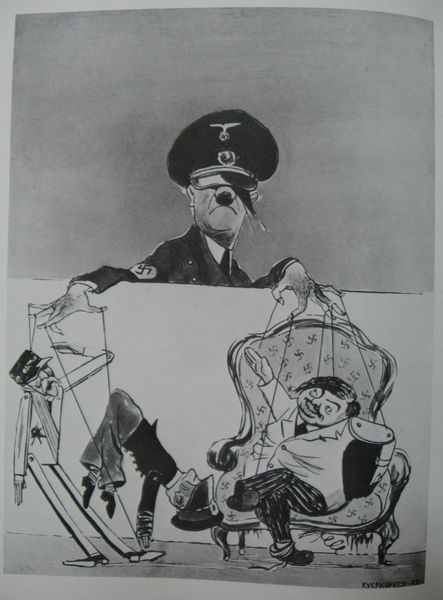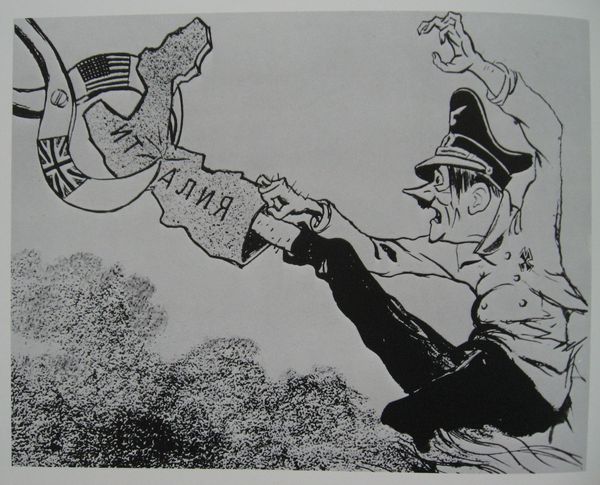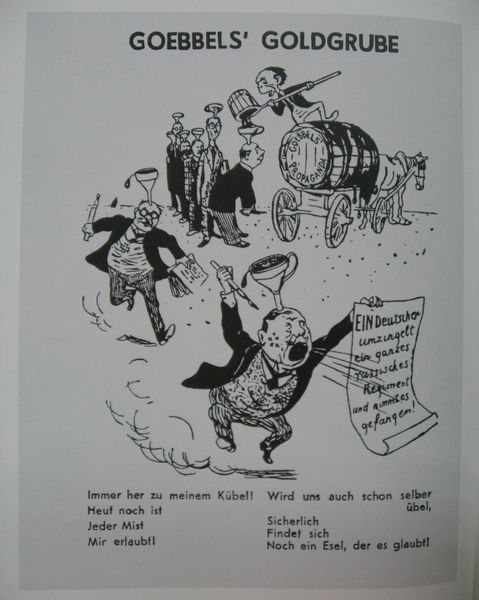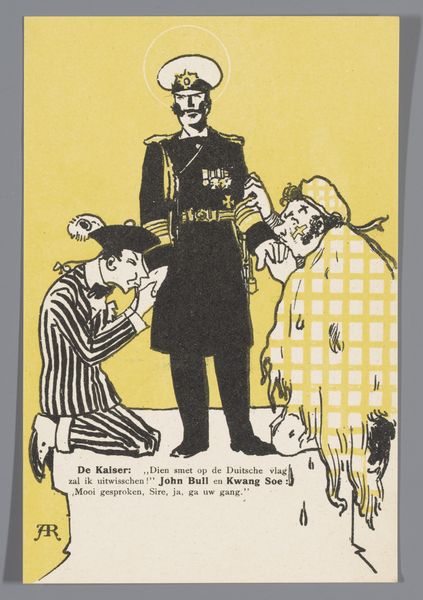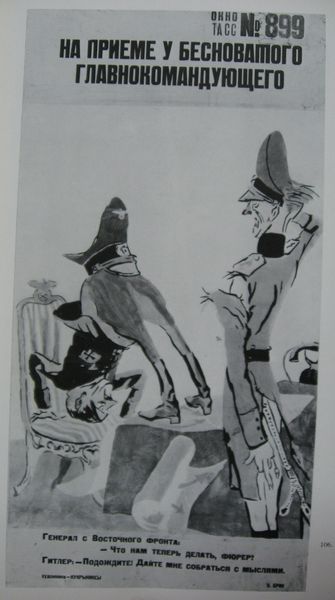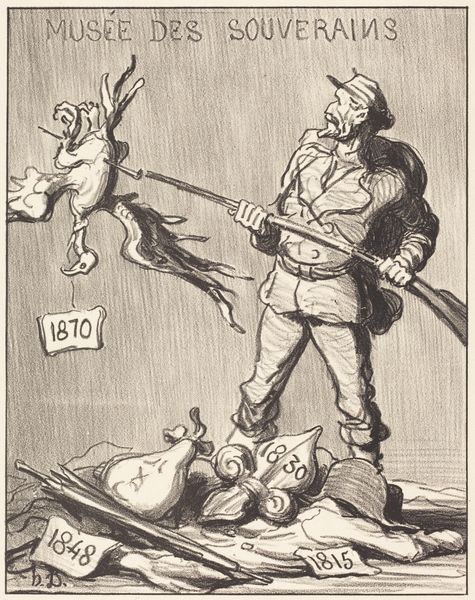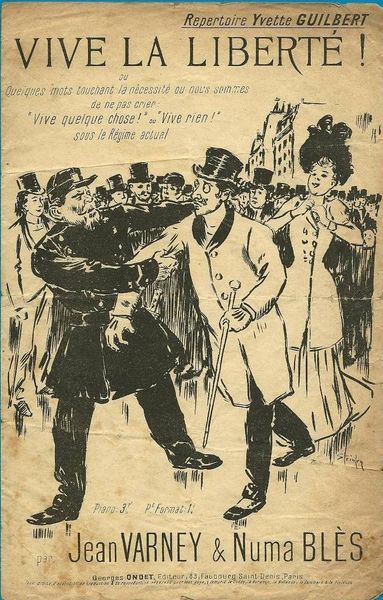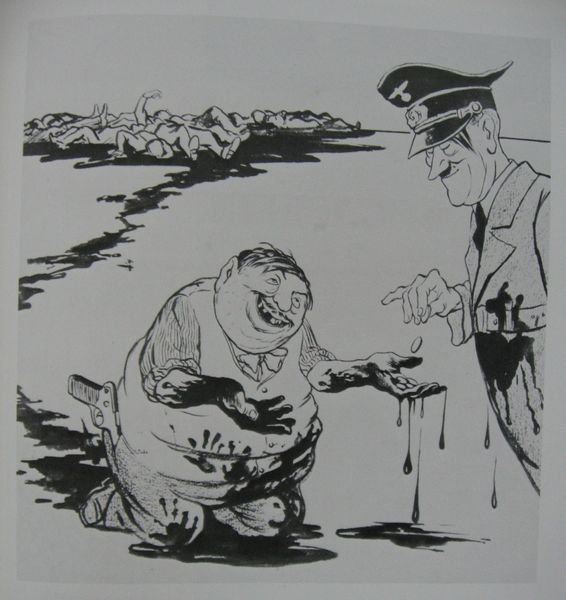
Copyright: Kukryniksy,Fair Use
Curator: This striking ink drawing, titled "Untitled," comes to us from the Kukryniksy collective, created in 1944. It's a rather unsettling piece. What are your first thoughts? Editor: It’s… intense. The dark ink and caricature-like figures give it a grotesque quality. There’s an immediate sense of dread and implied violence that's really hard to ignore, and I think that those qualities speak volumes in understanding war in its social, historical, and personal impact. Curator: Absolutely. Kukryniksy were famous for their Soviet political cartoons. This image, specifically made in '44 during a critical point in World War II, functions as stark anti-Nazi propaganda, designed to mobilize the Soviet population by visualizing an impending downfall of the Nazi regime. Editor: You can certainly see that anti-fascist sentiment. The depiction of Hitler with bandages around his head and clutching a gun as the server is offering a platter full of Nazi heads definitely gives the image a feel of both justice and a warning about what's to come for them. I mean, there is nothing pretty or dignified here, but is brutality an essential part of their historical impact? Curator: The grotesque exaggeration is central. German Expressionism, while originally avant-garde, gets twisted here. The intense emotion and distorted reality serve a direct, almost blunt, political purpose. It really makes one consider how artistic styles get appropriated and reshaped by ideological forces. The museum plays its role in highlighting that propaganda and its historical importance, particularly about public reactions. Editor: Definitely. The iconography—skulls, the SS uniform—they all function as signifiers of extreme power wielded with terrible consequences, a kind of political horror. The historical role is more powerful than ever when analyzing contemporary social problems about power, racism, and corruption in our current environment. Curator: It serves as a stark reminder of the destructive forces of the regime, but it's fascinating how art can also contribute to those feelings during periods of global crisis. Editor: Absolutely. These images can provoke and push a population, which is exactly the power that art can use to bring communities together in resistance and change, but we need to constantly question what political ends such artistic agency truly serve. Curator: That said, let us now carry with us a reminder of how images become tools, both during conflicts and our interpretations thereof later.
Comments
No comments
Be the first to comment and join the conversation on the ultimate creative platform.
